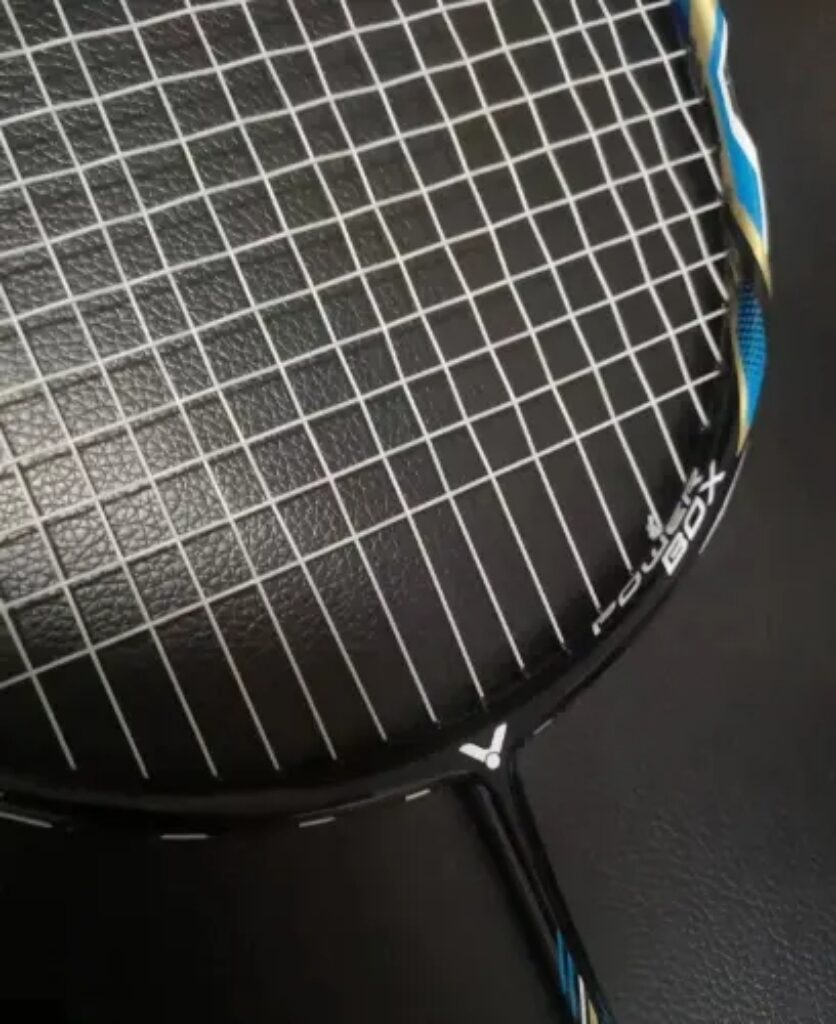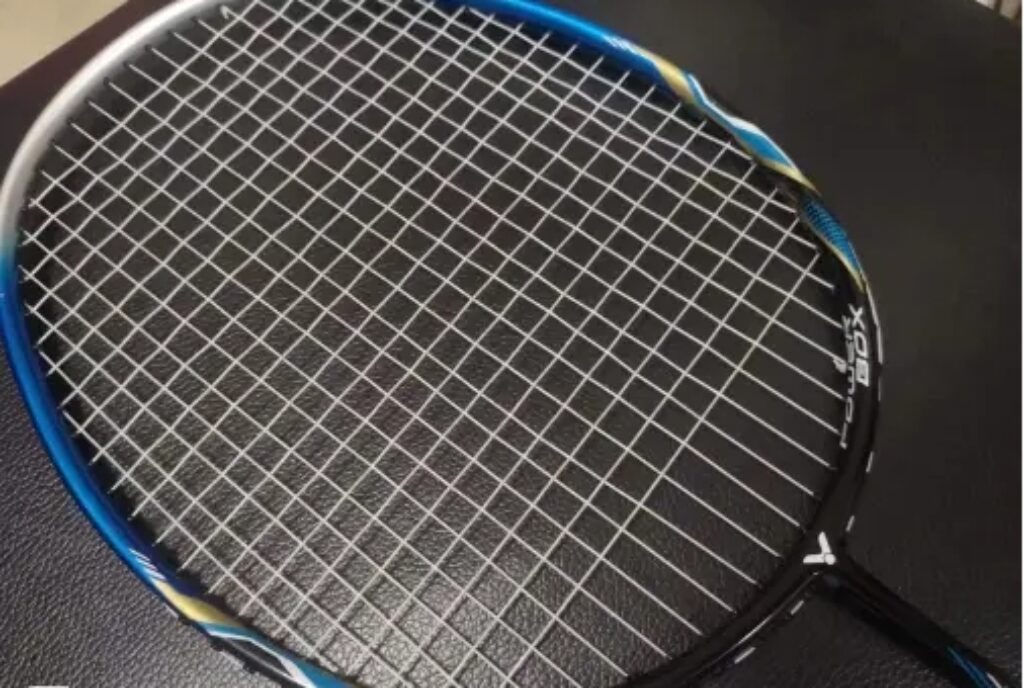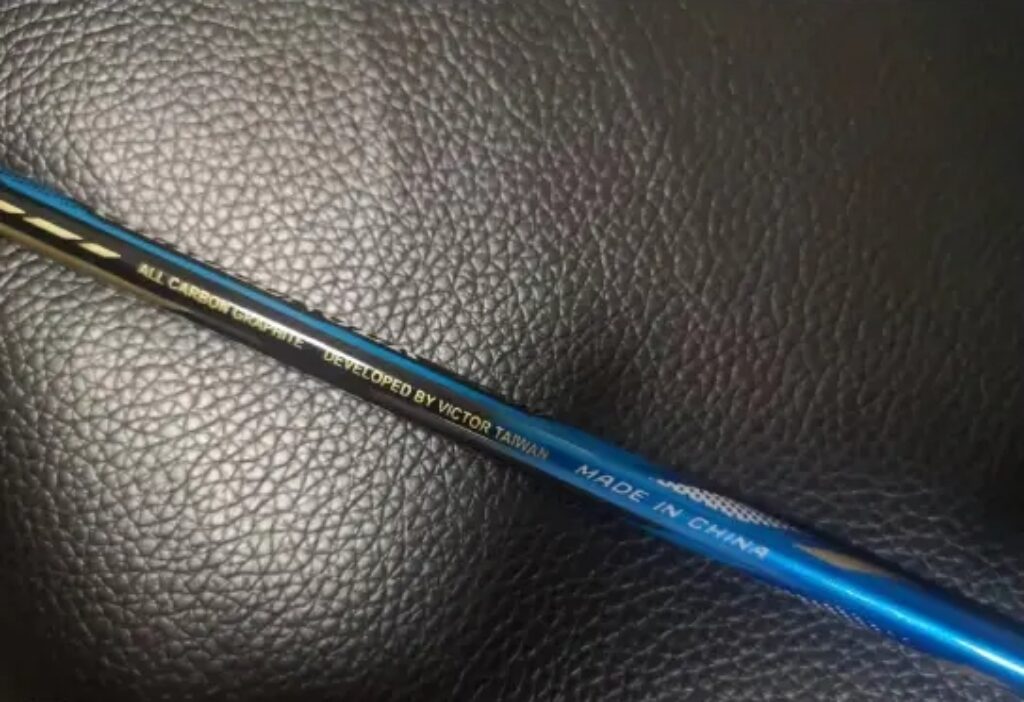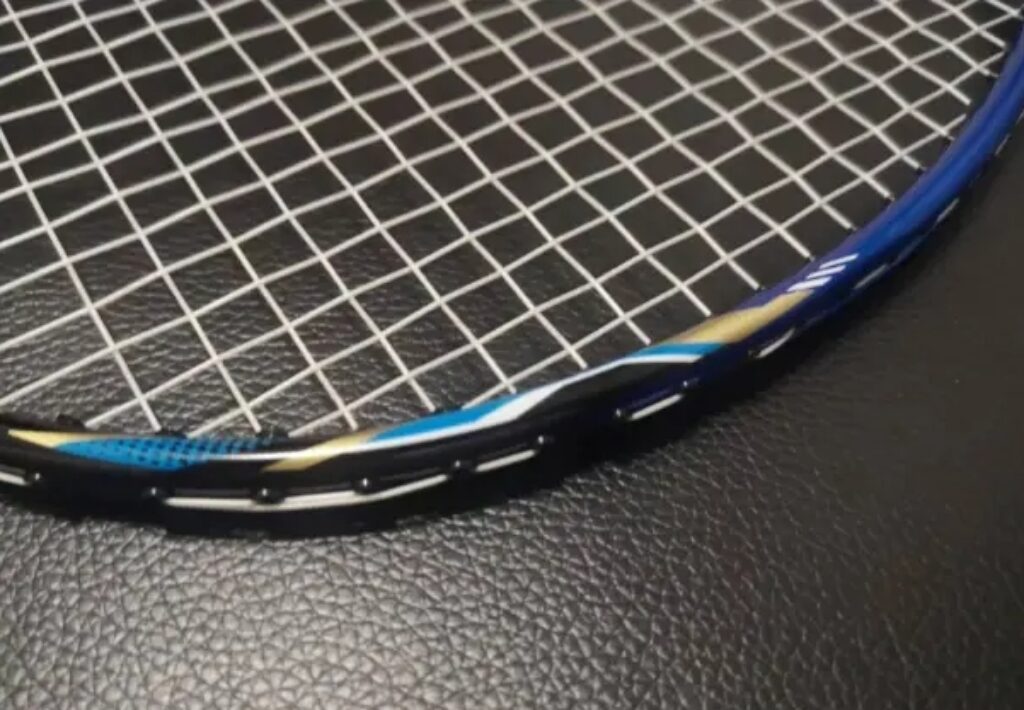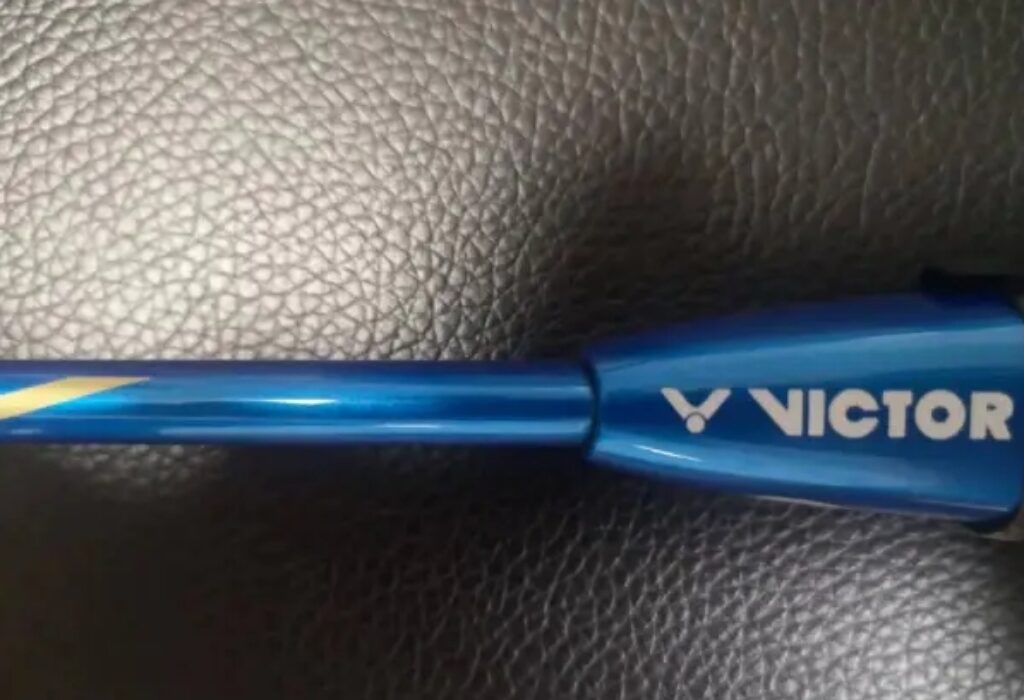The low-end entry racket market is quite complex. As far as I know, there are already many rackets in the 99 series, such as the Balanced Blade and the Offensive-Defensive Blade. However, I haven’t experienced their actual performance yet, so I’ll wait until I get the chance to try them. In the near future, I plan to conduct a comprehensive evaluation and comparison of entry-level rackets priced between 100 and 200 yuan. Many advanced players may dismiss these rackets, and they are indeed not very appealing. But to provide some guidance for beginners, I’ll first talk about the long-standing Victor 9500.
The “Fire Dragon Spear” has been a renowned name for more than a decade, back when I was in high school. I vividly remember saving up my pocket money for a long time to buy one online, only to receive it with a broken frame. Lacking experience at the time, I didn’t file a claim, and that was the end of it. After many years, picking up these two rackets again brings back a lot of memories: I still recall running under the setting sun—that was my lost youth.
Back to the topic, these rackets belong to my classmate: one is the red 9500C, and the other is the blue 9500. In essence, there’s not much difference between them, so I’ll discuss them together.
Appearance: The red-black and blue-black combinations are generally safe choices. The red-black version is more bold, while the blue-black version is more understated. The design has been maintained up to now, and in terms of paint durability, the 9500 seems to hold up better than the 9500C. As for looks, they’re fairly standard, carrying the typical aesthetic of older Victor rackets. If you care about aesthetics, you might want to check out the Pro Kennex Star Shadow, Star Illusion, or Star Cloud.
Specifications: Both rackets are 4U in weight, strung with BG95 at around 25 lbs. The balance point of the 9500C is slightly higher. Overall, they both fall under the category of balanced rackets, with 10-4 o’clock string grooves and box frames.
Feel: Nothing particularly stands out. If I had to point out a weakness, I’d say there’s no real weakness—everything is fairly average. I’d give it a score of around 65 out of 100 (truly balanced). It’s not great at generating power for clears, especially after using highly elastic rackets like the Kirin, White Tiger, and Vermilion Bird. After using those, the 9500 feels quite stiff. The shaft feels somewhat rigid and dull, and the directional control isn’t very precise, which is particularly noticeable when attacking from the backcourt. The red-black 9500C feels slightly better when driving the shuttle downwards, though this could just be a psychological effect. The racket does have enough power to deliver a smash in the mid- and front-court. In terms of flat drives at the net, although the racket is relatively light, it’s hard to control because of the slow rebound rate. When caught in a rally, it’s best to break out of it quickly. However, the racket does perform well in net shots, with the large frame offering a high tolerance for errors. Whether it’s rolling the shuttle along the net or cross-net shots, it handles them with ease.
Overall: After using it for a while, although the racket doesn’t have any standout features, I don’t think it’s particularly suited for complete beginners. In my opinion, it’s more suitable for players who enjoy smashing, have some basic strength, but haven’t yet perfected their technique—typically aggressive male players. As for female players, I’d suggest steering clear and opting for the Star Cloud or Star Illusion instead. To this day, the 9500 still holds a place in the low-end market. Besides its inherent brand advantage, the performance it offers at this price point is indeed noteworthy. Moreover, it has a certain level of resale value and is highly durable. If you’re worried about buying other brands and getting a poor-quality racket (since 100-200 yuan can still be a lot for some students), the 9500 is a safe choice as an entry-level racket. If you’re looking for an even better experience at the same price, stay tuned for my next review.








